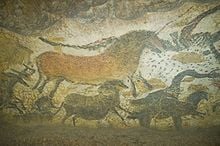Ali, H. (2016). The History of Animation and Flipbooks. Second Chair Video. com. Retrieved from http://www.secondchairvideo.com/the-history-of-animation-and-flipboo
Animation History - Praxinoscope. Youtube. Retrieved from https://www.youtube.com/watch?v=TK_K_Hvf-24
Amid, A. (2016). CartoonBrew.com. The Future of Animation is Here. Retrieved from http://www.cartoonbrew.com/ideas-commentary/the-future-of-animation-is-here-140360.html
About Zoetrope. Wordpress. Retrieved from https://zoetropic.wordpress.com/about-zoetropes/
Bartle, J. (2014). The phenakistoscope was an early invention for animation. It. Prezi.com. Retrieved from https://prezi.com/feiotsegv6gp/the-phenakistoscope-was-an-early-invention-for-animation-it/
Bloop Animation. The 5 Types of Animation - A beginners Guide . Retrieved from https://www.bloopanimation.com/types-of-animation/
Cartwright, M. (2013). Greek Pottery. Ancient History Encyclopedia. Retrieved from http://www.ancient.eu/Greek_Pottery/
Chung, K. (2011). Phenakistoscope – The Early Form of Animation. WordPress. Retrieved from https://intelligentheritage.wordpress.com/2011/09/18/phenakistoscope-the-early-form-of-animation/
Clifford, C. (2016). Tim Burton Master Class: Breaking Down the Odd and Beautiful. Indie Film Hustle. Retrieved from https://indiefilmhustle.com/tim-burton-masterclass/
Curtis, S. (2014). The Telegraph. How technology is driving the next wave of film animation. Retrieved from http://www.telegraph.co.uk/technology/news/10849028/How-technology-is-driving-the-next-wave-of-film-animation.html
Walt Disney Animation Studios. (n.d.). Retrieved March 15, 2017, from https://www.disneyanimation.com/technology/innovations/hyperion
Early Animation 5 Kineograph Flipbook. Youtube. Retrieved from https://www.youtube.com/watch?v=7K3aMdnCqXg
Future Technology in Animation in 2025. Tackk.com. Retrieved from https://tackk.com/5udpjr
Gayle, D. (2012). The caveman cartoons: How prehistoric artists make their paintings move. Mail Online. Retrieved from http://www.dailymail.co.uk/sciencetech/article-2207596/A-night-pictures-caveman-style-Prehistoric-artists-used-cartoon-like-techniques-make-paintings-move.html
Fronczak, T. (2011). 7 Types of Computer Animation Software Worth Knowing. Animation Career Review. Retrieved from http://www.animationcareerreview.com/articles/7-types-computer-animation-software-worth-knowing
Hammond, W. (2016). Pixar director John Lasseter on the future of animation. TimeOut.com. Retrieved from https://www.timeout.com/london/film/pixar-director-john-lasseter-on-the-future-of-animation-1
History of Animation. Webflow. Retrieved from http://history-of-animation.webflow.io/
Kandel, J. (2016). What's The Future of Animation?. Quora.com. Retrived from https://www.quora.com/Whats-the-future-of-animation
Kumar, J. (2012). The Wheel Of The Devil - The History Of The Zoetrope From Ancient China To Pixar. Thalo. Retrieved from http://www.thalo.com/articles/view/343/the_wheel_of_the_devil_the_history_of_the
Mahpar, M. H. (2012). The wonderful world of Les’ Copaque. The Star. Retreived from http://www.thestar.com.my/business/business-news/2012/11/10/the-wonderful-world-of-les-copaque/
Phenakistoscope. NCSSM. Retrieved from http://courses.ncssm.edu/gallery/collections/toys/html/exhibit07.htm
Praxinoscope. NCSSM. Retrieved from http://courses.ncssm.edu/gallery/collections/toys/html/exhibit11.htm
Roos, D. How Computer Animation Works. How Stuff Works.com. Retrieved from http://entertainment.howstuffworks.com/computer-animation1.htm
Thaumatrope Motion Device. EggPlant. org. Retrieved from http://www.eggplant.org/ideas/visual/animation/thaumatrope.html
Thaumatrope.NCSSM. Retrieved from http://courses.ncssm.edu/gallery/collections/toys/html/exhibit06.htm
The Phenakistoscope, the First Device to Demonstrate the Illusion of a Moving Image. (2017) History Information.com. Retrieved from http://www.historyofinformation.com/expanded.php?id=4131
The History of Pre-Animation and Thaumatrope. Slurpy Studios. Retrieved from http://www.slurpystudios.com/history-of-animation-thaumatrope/
Use of Technology. Weebly.com. Retrieved from http://pixar-animation.weebly.com/use-of-technology.html
Vanian, J. (2015). How Pixar brings its animated movies to life. Fortune.com. Retrieved from http://fortune.com/2015/09/14/pixar-brings-movies-life/
Volve, J. (2014). Disney rendered its new animated film on a 55,000-core supercomputer. Engadget,com. Retrieved from https://www.engadget.com/2014/10/18/disney-big-hero-6/
Wong, V. & Bhar, A. (2009). Malaysia’s first 3D animation film produced on time and on budget with Autodesk Maya. AutoDesk.com. Retrieved from http://www.autodesk.de/adsk/servlet/item?siteID=19753603&id=19959245&linkID=19961024
Zoetrope. NCSSM. Retrieved from http://courses.ncssm.edu/gallery/collections/toys/html/exhibit10.htm















